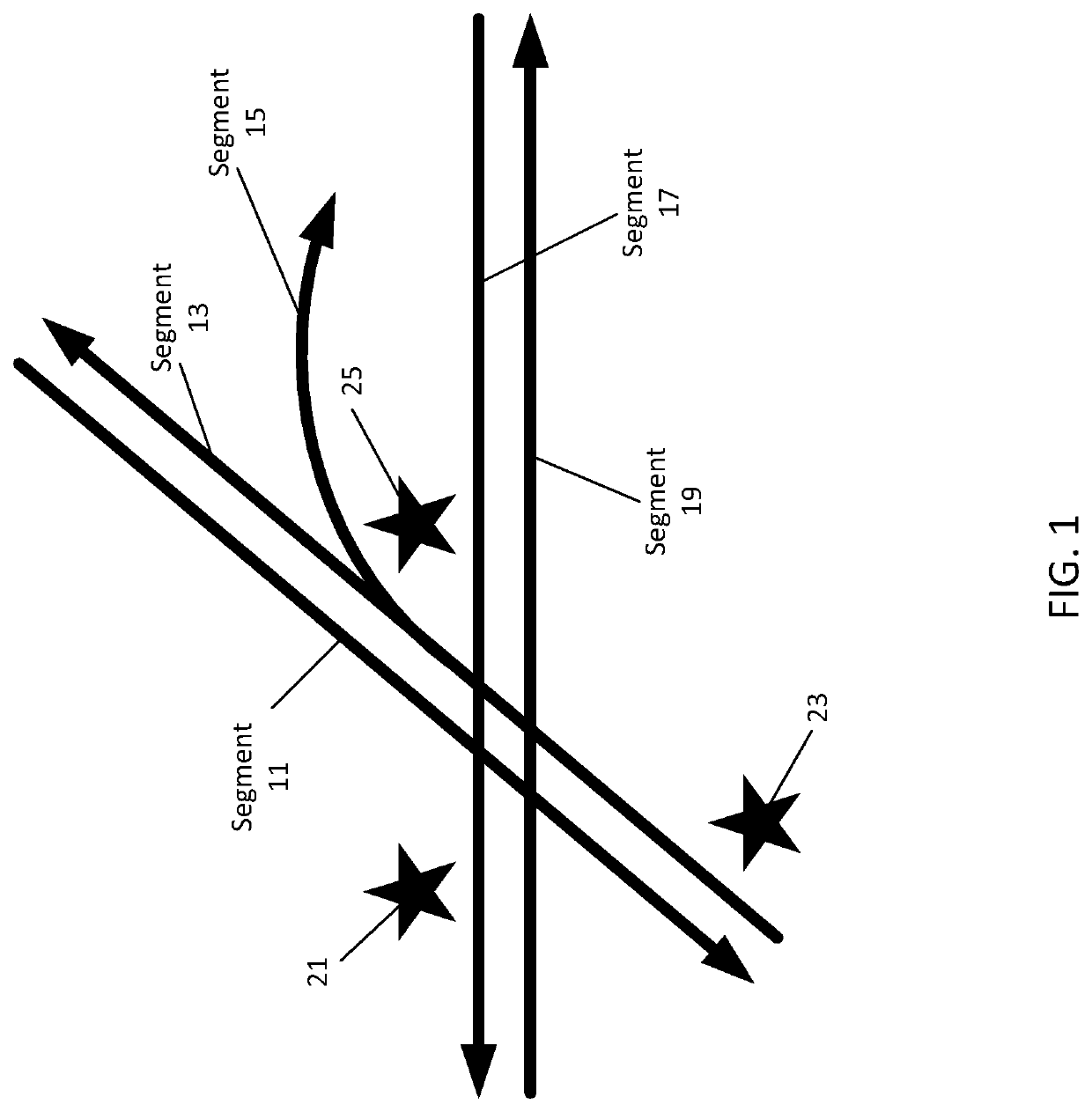Supervised point map matcher
a point map and matcher technology, applied in the direction of navigation instruments, instruments, process and machine control, etc., can solve the problems of satellite geometry, error or inaccurate measurement, and simple location on its own not being useful to a user,
- Summary
- Abstract
- Description
- Claims
- Application Information
AI Technical Summary
Benefits of technology
Problems solved by technology
Method used
Image
Examples
embodiment 1
[0132]The following embodiments are disclosed. A method for providing a point based map matching algorithm, the method comprising: acquiring a plurality of probe reports for a road segment, the plurality of probe reports comprising heading data and a plurality of positional points generated using global positioning systems; map matching the plurality of positional points using a path based map matching algorithm; map matching the plurality of positional points using a point based map matching algorithm; determining accurately point based map matched positional points and erroneously point based map matched positional points using a comparison between the path based map matched positional points and the point based map matched positional points; identifying a distance error value and a heading error value for each of the accurately point based map matched positional points and the erroneously point based map matched positional points; generating, using kernel density estimation, a p...
embodiment 4
[0135] the method of embodiment 1, wherein the plurality of probe reports are for road segments include the same configuration.
[0136]Embodiment 5: the method of embodiment 1, wherein providing the probability weights comprises: storing the probability weights as an artifact for the road segment in a geographic database.
embodiment 6
[0137] the method of embodiment 1, wherein the heading data is provided by a magnetometer.
[0138]Embodiment 7: the method of embodiment 1, wherein the probability density distributions are gaussian.
[0139]Embodiment 8: the method of embodiment 7, wherein a respective probability weight is calculated using a mean and a variance of the respective probability density distribution.
PUM
 Login to View More
Login to View More Abstract
Description
Claims
Application Information
 Login to View More
Login to View More - R&D
- Intellectual Property
- Life Sciences
- Materials
- Tech Scout
- Unparalleled Data Quality
- Higher Quality Content
- 60% Fewer Hallucinations
Browse by: Latest US Patents, China's latest patents, Technical Efficacy Thesaurus, Application Domain, Technology Topic, Popular Technical Reports.
© 2025 PatSnap. All rights reserved.Legal|Privacy policy|Modern Slavery Act Transparency Statement|Sitemap|About US| Contact US: help@patsnap.com



